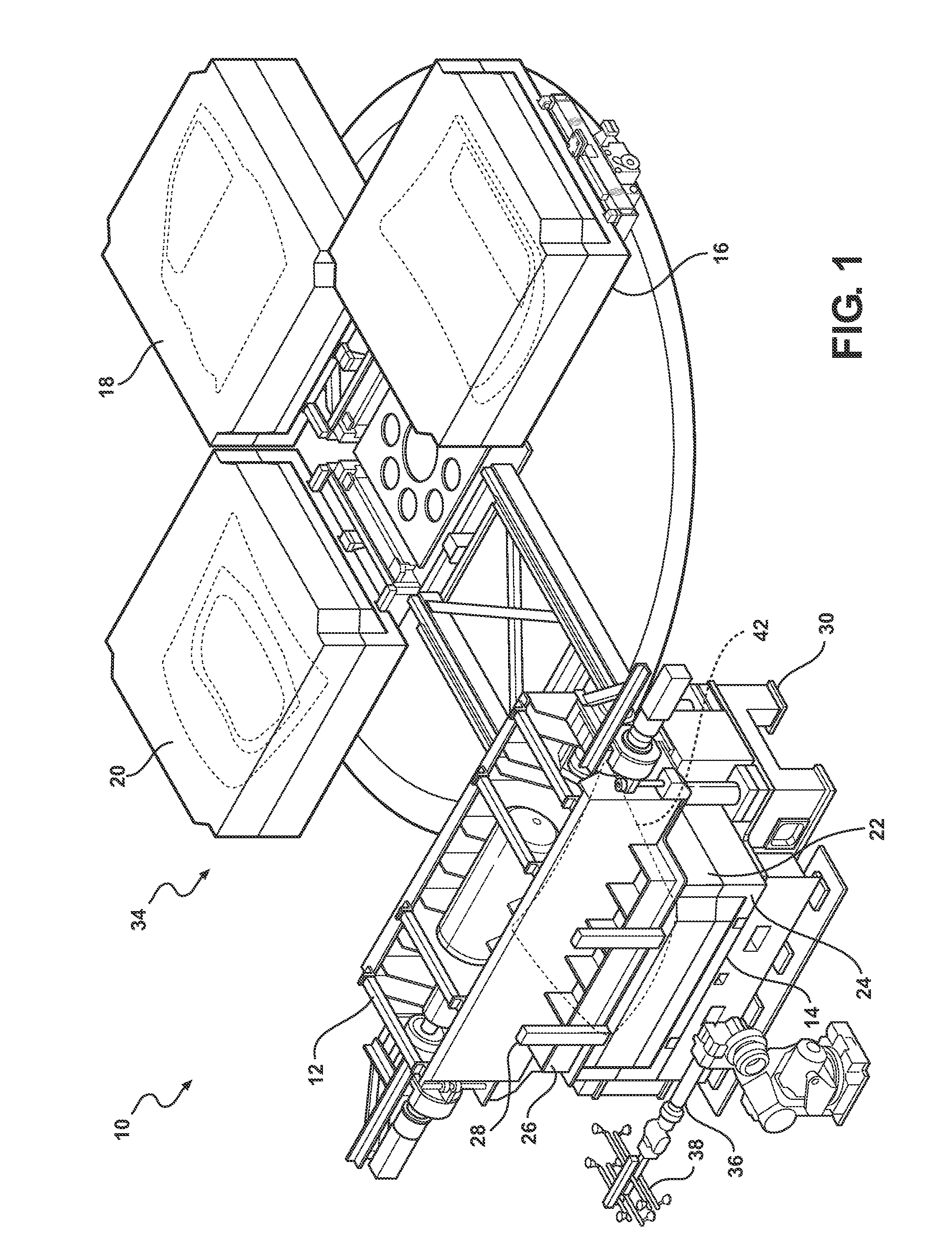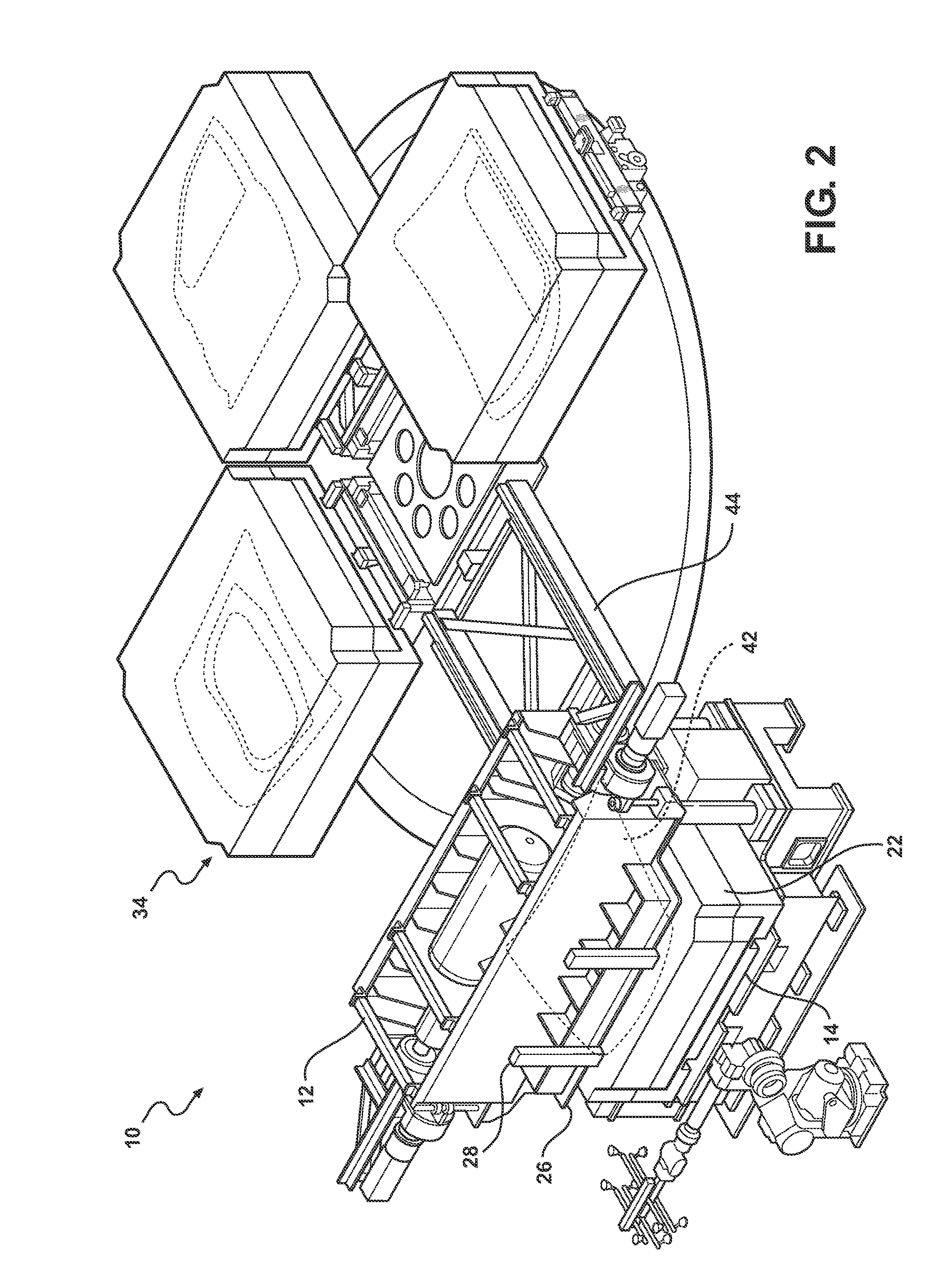Part in die, die change process
a die change and die technology, applied in forging presses, forging/pressing/hammering apparatuses, shape tools, etc., can solve the problems of high machinery cost, large space required for multiple presses, and conventional die change methods, so as to reduce the amount of time taken
- Summary
- Abstract
- Description
- Claims
- Application Information
AI Technical Summary
Benefits of technology
Problems solved by technology
Method used
Image
Examples
Embodiment Construction
[0025]Referring now to the drawings in detail, numeral 10 generally indicates a rotary die changer and die press system. The system 10 includes a die press 12 and a rotary die changer 34. A home position of the die press 12 is a closed position in which a die in the die press 12 is shut. During a die change process, a workpiece is left in a die that is removed from the die press 12.
[0026]In a specific embodiment shown by example in the drawings, a method according to the invention may be applied to the rotary die changer and die press system 10. In FIG. 1, a first die set 14 is positioned in the die press 12. The first die set 14 includes upper and lower members 22, 24, respectively. The upper member 22 is mounted on a ram 26 of the die press 12, such as by clamps 28 or similar, and the lower member 24 rests on a base 30 of the die press 12. The die press 12 is in a closed, home position as shown wherein the ram 26 is lowered to mate the upper 22 and lower members 24 of the first di...
PUM
| Property | Measurement | Unit |
|---|---|---|
| Length | aaaaa | aaaaa |
| Distance | aaaaa | aaaaa |
Abstract
Description
Claims
Application Information
 Login to View More
Login to View More - R&D
- Intellectual Property
- Life Sciences
- Materials
- Tech Scout
- Unparalleled Data Quality
- Higher Quality Content
- 60% Fewer Hallucinations
Browse by: Latest US Patents, China's latest patents, Technical Efficacy Thesaurus, Application Domain, Technology Topic, Popular Technical Reports.
© 2025 PatSnap. All rights reserved.Legal|Privacy policy|Modern Slavery Act Transparency Statement|Sitemap|About US| Contact US: help@patsnap.com



